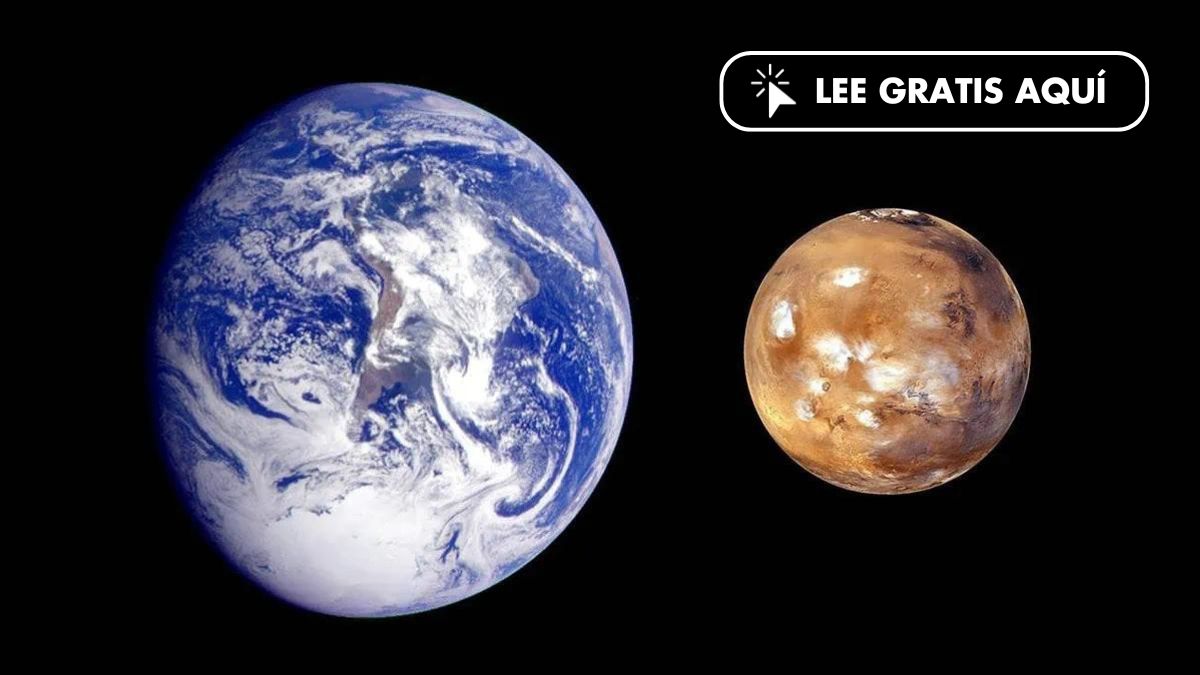Radiation is an invisible threat to the colonization of Mars

Exploring the red planet will have to face many problemsfrom the effects of microgravity to space mushrooms, including radiation ones, one of the most dangerous.
The latter comes mainly from two sources: from the Sun (and its solar storms) and from outer space, distant galaxies, stars and supernovae. Solar storms are very difficult to predict and they emit enormous amounts of radiation in a very short time, mainly in the form of protons. On the surface of our planet, they create beautiful auroras in the sky. But in space they can be truly deadly.
For example, in August 1972, between the Apollo 16 and 17 missions, a series of these very powerful storms caused problems and disruptions to satellites and communications systems on Earth. Fortunately, there were no astronauts in space at that timebecause he probably wouldn’t have survived.
In its turn, Cosmic radiation is a threat that is always present. It is also composed primarily of protons, but also contains heavy elements such as helium or iron, which are much more dangerous and energetic. They are capable of destroying the atoms of the material they encounter, be it the metal walls of a ship, satellite or person. In doing so, they generate a cascade of subatomic particles or very harmful secondary radiation. These are what are known as cosmic rays.
Thanks to the protective atmosphere and magnetic field, On Earth we are protected from this aggression. However, on a future trip to Mars, astronauts will be exposed to 700 times more material than what reaches our planet. One day in space is equivalent to the radiation received on the surface of the Earth in an entire year. The effects this will have on people are uncertain and difficult to assess.
Depending on the dose received, this can cause severe damage to multiple tissues. Among other things, may cause cataracts, dermatitis, infertility, memory problems and nervous system, cardiovascular problems, even irreversible DNA mutations and cancer.
That’s why, More research is needed to protect astronautssimilar to that carried out at the GSI Helmholtz Center for Heavy Ion Research in Germany, the only one in Europe capable of simulating cosmic rays.
In search of materials immune to radiation
All in all, The best protection is to take cover behind thick walls or protective screens.like a concrete wall or the lead aprons worn by radiologists.
The problem is the large weight that would be required to make spacecraft from these materials. Instead of, Aluminum is usually used, which is much lighter.. However, while shielding behind a panel of this metal can protect against much of the low-energy radiation, such as most protons, heavier, more energetic elements will pass through, damaging the structure and reaching astronauts inside space. ship.
So, Much more efficient materials need to be developed for a future mission to Mars. Among them, due to their small size and low atomic number, those with high hydrogen content are possible options.
Water, for example, can be stored strategically. on the walls of the ship to create a kind of shield. Unfortunately, this is an extremely scarce commodity in space, and using it as a building element would be wasteful.
Polyethylene, the same plastic we might find in water bottles or shopping bags, or Kevlar, a synthetic fiber used in body armor, are other promising candidates. Due to their high hydrogen content, they reduce the received radiation dose by up to 30%..
Imitate nature’s solutions
There are many organisms on Earth that are resistant to radiation, especially some radiotrophic fungi that grew in Chernobyl, such as Cladosporium spherospermum. Some researchers suggest that we could use them as human shields for space travelers.
Experiments conducted on the International Space Station showed that just 1.7 millimeters of this mushroom is enough to reduce radiation by about 1%. It is also an organism that uses radiation to grow in a process called radiosynthesis, so its protective function can be enhanced as the mission progresses in space.
Other organisms turn to melanin, a molecule that in humans gives color to the skin, eyes and hair and also protects against sun damage. Being flexible and lightweight, it is being considered for use as a biomaterial to be applied to the skin of astronauts. as sunscreen or even on the structure of a ship.
Protective magnetic bubbles
In the same vein, some scientists are exploring the possibility of generating magnetic fields like the one that protects the Earth. Projects such as CERN’s SR2S or NASA’s CREWHat are working on the design of superconducting magnetic coils capable of generating a magnetic field around a spacecraft to deflect up to 50% of harmful cosmic rays.
In addition, we have medications to treat radiation exposure not only in astronauts, but also in potential accidents on Earth, such as in nuclear power plants, medical or research facilities, or other radiological or nuclear emergencies. Some examples are stable iodine, cytokines or chelators, and radioactive scavenging products.
So, on a future journey to Mars, safety from harmful cosmic particles will be achieved through a combination of different solutions, some based on technologies we already have, and others perhaps based on innovative ideas we haven’t yet thought of.
Jesús Ordoño Fernández, Postdoctoral Researcher, Tissue and Biomaterials Engineering, IMDEA MATERIALS.
This article was originally published on The Conversation. Read the original.

